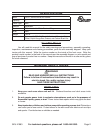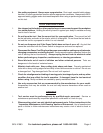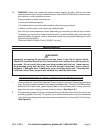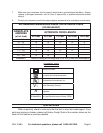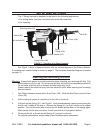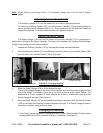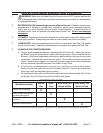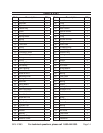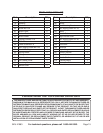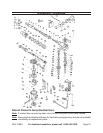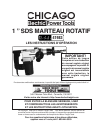
Page 10SKU 41983
For technical questions, please call 1-800-444-3353.
Note: When drilling a hole larger than 1-1/4” diameter, always use a drill bit with 4 cutting
edges.
Adjusting the Auxiliary Handle
The Auxiliary Handle (107) can be placed into a variety of different positions.
To rotate the Auxiliary Handle (107), turn the Auxiliary Handle (107) counterclockwise to
loosen the band and Foursquare Bolt (111). Once loosened, turn the Auxiliary Handle to
the position desired. Turn the Handle clockwise to tighten into place.
Using the Depth Gauge
The Depth Gauge (106) can only be used if the Auxiliary Handle (107) is positioned on
either side or the top of the Rotary Hammer. The body of the Hammer will interfere with the Depth
Gauge if the handle is in the bottom position.
Loosen the Auxiliary Handle (107) by twisting the Handle counterclockwise.
Once the Auxiliary Handle (107) is sufficiently loose, pull back on the Handle Holder (108)
until the hole in the Handle Holder (108) is fully open.
Main Handle-Left Side Position
Main Handle-Right Side Position
Switching Knob
FIGURE 2 - Changing Settings
Slide the Depth Gauge (106) in to the desired length.
The tip of the Depth Gauge on the front of the Hammer should be the desired depth of the
hole to be drilled. The depth is from the tip of the bit to the tip of the Depth Gauge. For
example for a 2” hole, measure 2” back from the tip of the bit. Position the front tip of the
Depth Gauge at that spot (See Figure 1).
After the Depth Gauge (106) is positioned in the desired position, slide the Handle Holder
(108) up and twist the Auxiliary Handle clockwise until tight. The Depth Gauge should be
securely in position, and should not move.
Changing the Settings
Your Rotary Hammer has both a Switching Knob (22) and a Main Handle (91) which must
be adjusted before drilling, hammer drilling, or chiselling - see Figure 2.
1.
2.
3.
4.
•



